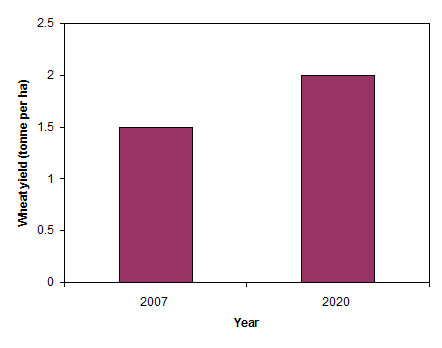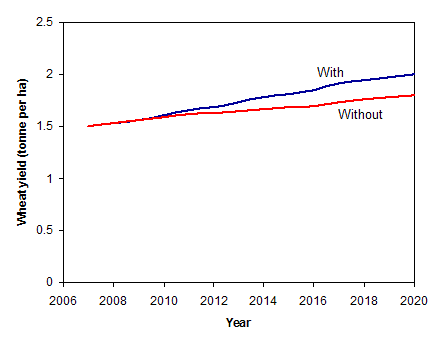93 – Thinking like an economist 24: With and without
In Benefit:Cost Analysis, making a comparison with and without the project is not the same as comparing before and after the project.
Benefit:Cost Analysis involves making a comparison between alternative courses of action (“do something” versus “do nothing”). The different courses of action would have different outcomes, which we have to anticipate, quantify, value, and compare.
Crucially, the comparison in such an analysis has to be between “with” and “without” the action being considered, and not “before” and “after” its implementaion. “Without” is almost certainly not the same as “before”, due to changes in markets, technology, and other factors that would occur whether or not the project goes ahead. For this reason, a “before” versus “after” comparison can give a highly misleading impression of the merits of the project.
For example, suppose you are evaluating proposed research work to develop improved wheat varieties for a region. Suppose that the current average wheat yield is 1.5 tonnes per hectare, and that after the research, the best bet is that average yield will increase to 2.0 tonnes per ha by 2020. You might be tempted to say that the economic value of the research would be the financial value of the 0.5 tonne increase (Figure 1).
Figure 1. Before and after the research.
However, there may be changes in yield that would occur even without the proposed research. There may be trends in disease or pesticide resistance that mean that yields will decline, or there may be research by other research groups that would increase yield to say 1.8 tonnes per hectare in the absence of the proposed research (Figure 2).
Figure 2. With and without the research.
What we require for a valid evaluation of the project is estimates of both time paths of benefits and costs, with the proposed research and without the proposed research, and we calculate the difference in each time period.
It’s a simple idea but surprisingly often missed by non-economists.
We also need to discount the differences to make them comparable at a particular point in time (see PD#33).
Of course, comparing “with” and “without” can be substantially more difficult than comparing “before” and “after”. In the “without” scenario, one has to anticipate and quantify all the things that will happen in future in the absence of new action, whereas no prediction is required for the “before” scenario.
In the above example, we would need to anticipate the success not only of the research we wish to evaluate, but also the success of other researchers working in the same area. If we did not do so, we could substantially overstate the benefits of the research we are evaluating.
Based on Figure 2, and allowing for discounting at 5%, the average value of the yield difference per year would be the equivalent of 0.06 tonnes per ha – much less than the 0.5 tonnes per ha suggested by Figure 1.
David Pannell, The University of Western Australia
Further Reading
Alston, J.M., Norton, G.W., and Pardey, P.G. 1995, Science Under Scarcity: Principles and Practice for Agricultural Research Evaluation and Priority Setting, Cornell University Press, Ithaca.

